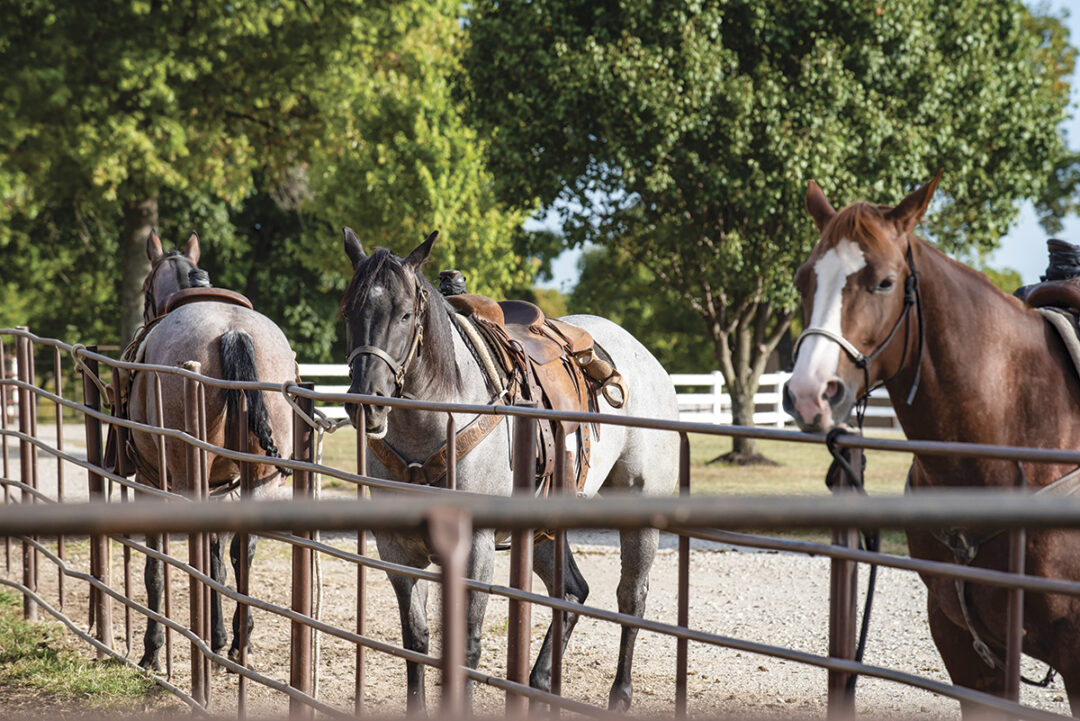While word may travel fast, change can sometimes happen a bit slower. Such is the case with rotational deworming – an outdated approach that is still used today, albeit less, as studies indicate.
Rotational deworming's risks today
The approach of rotational deworming goes back more than 40 years. The thought, at the time, was that horses should have zero parasite eggs in their stools, so they incorporated deworming every 60 days, using a different dewormer product each time. An effective approach then, decades later it set horses up for parasite resistance, as the practice inadvertently selected for resistant parasites with each deworming treatment.
“After several decades of [practicing rotational deworming], it proved not to be a good idea,” says equine veterinarian Kenton Morgan who works in equine technical services with Zoetis. “The reason being is that it exposed parasite populations to so many treatments, which accelerated selection for resistance. When you give anthelmintics, there’s a tiny subpopulation with a slightly different genetic makeup of worms not as susceptible to that dewormer. When you use a dewormer in that population, you kill off susceptible worms. A few that were resistant will continue to reproduce, and over time, you begin to select more and more for a resistant subpopulation of parasites. After years and years, we’re at the point that we’ve selected for resistant populations, and these have now become the dominant populations of parasites. As a result, some dewormers aren’t as effective.” But not all parasites are resistant to all dewormers, Morgan explains.
“Back when dewormers came out, they worked well against everything. We were able to deworm every animal with lots of success,” says Tony Hawkins, Valley Vet Supply technical service veterinarian. “Since then, and the introduction of rotational deworming practices, small strongyles have developed to become the larger problem, and they develop resistance more easily. To avoid contributing to further resistance, deworming recommendations had to change.”
The American Association of Equine Practitioners (AAEP) have provided Parasite Control Guidelines – an important resource for horse owners to review and discuss with their veterinarians. Hawkins states, “The true goal of parasite control in horses [and other equids] is to limit parasite infections so animals remain healthy and clinical illness does not develop. The goal is not to eradicate all parasites from a particular individual. What is needed are properly timed treatments with effective anthelmintics administered at the appropriate time of the year, which correspond to the epidemiological cycles of transmission and the relative parasite burdens in individual horses.”
Approaching the conversation against rotational deworming
Upon learning that a trainer, barn manager or riding buddy still consistently follows a rotational deworming program, what’s the best way to go about the conversation? Hawkins and Morgan share how they would approach it.
Hawkins says, “I would start out by asking why they think rotational deworming is a good idea – and just know that ‘Because that's the way we've always done it’ probably isn't the best answer anymore. If they are open to having a discussion, then you could follow up with, ‘Recent work has shown that rotational deworming promotes resistance in these parasites, and to ensure that we have long-term success with our deworming program, we might want to consider running fecal egg counts and deworming horses more selectively based on the results.' Doing so will mean fewer dewormers to purchase, and it's going to offer an idea of the parasite population that you have on your farm. It gives us a lot of information, and at the same time, it allows us to deworm these horses at the frequency that they really need to be dewormed and with the appropriate products that we need to use.”
Morgan says, “These conversations are always hard; no doubt about that. Approach them with respect and say, ‘I’ve been reading a lot about this, and maybe we could be over-deworming these horses. I looked at some info from AAEP, a large equine veterinary group, and they’ve now demonstrated evidence – based on good science – that by deworming too frequently, we might be contributing to this resistance problem.’ There are not many people in the horse world who have not heard of parasite resistance in horses; it should be something that rings a bell with them. Then, share how horses are different with respect to how many parasite eggs they shed into the environment, that we can do a fecal egg count to identify those who are higher risk. Some horses may need more intensive programs than others, while most may just need a couple of effective deworming products each year to control their parasites. [Say], ’You could save some money, and your horses could have better health. We could be part of the solution in slowing down the selection for resistance in parasite populations. It’s a win-win for everybody.’ Interject into the conversation that the companies who make the deworming products are looking for new products, but currently there are no new products on the horizon. It’s important to use our current products sparingly and strategically because once parasites are resistant to all products, we don’t have any alternatives right now.”
When to deworm your horse
AAEP guidelines recommend deworming when parasite levels are generally at their highest, during the spring and fall. Treatment for bots and tapeworms should be timed to coincide with the end of the fly season for bots and the end of pasture season for tapeworms, typically late fall or early winter.
“For foals, I recommend deworming every two months until a year old,” says Hawkins. “Foals are prone to ascarids early on, and benzimidazole dewormers, also known as ‘white dewormers,’ are recommended. Yearlings and 2-year-olds should be dewormed on average three to four times per year, based on their fecal egg count results, with either ivermectin or moxidectin and praziquantel for tapeworm control in the fall.”
As a general best practice, adult horses should be treated twice yearly, during spring and fall. Adult horses should be dewormed with either ivermectin or moxidectin and praziquantel for tapeworm control in the fall.
“Many senior horses become high shedders as they age, which is expected due to diminishing immunity,” Hawkins says. ”It’s ideal to treat them as you would a normal adult horse – do a fecal egg count, and based off of that, you may be deworming them two to four times per year.”
Ask your veterinarian about performing a yearly fecal egg count, which will help guide you on the frequency of deworming treatments your horse specifically needs. Perform fecal egg count reduction tests (FECRT) in both foals and adult horses every other year. In herds with high numbers of horses, FECRT does not need to be performed on all horses – six is the recommended number.
Hawkins also recommends to “Always dose dewormers to the actual weight of the individual horse. Many horse owners do not; they just give the whole thing, thinking ‘If a little bit's good, more is better, right?’ It’s important to weigh them or use a weight tape to dose accurately.”
For more information tailored to your horse’s individual needs, speak with your veterinarian.






